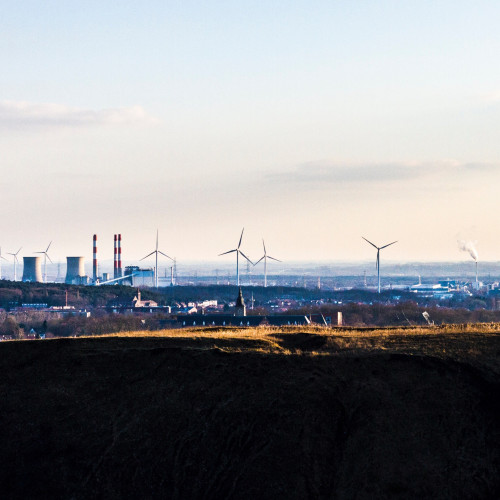After a lengthy and difficult birth lasting more than a decade the news from Hinkley Point C (HPC) has been steadily improving for some time. This week’s announcement that the project’s spending in the South-West has hit £3.2 billion, double the original target, demonstrates the huge boost which the construction of a new nuclear plant gives to a region’s economy.
The 1700 new jobs which HPC will create in the next year are tangible proof that investment in low carbon technology is helping Britain to recover from the Covid driven recession and could deliver similar benefits in other countries.
Coming on the back of the more favourable signs emerging recently from Prime Minister Boris Johnson’s Government about its attitude towards nuclear power this raises hopes about the industry’s future in the UK. EDF is expecting to achieve significant cost savings by the time it completes the second EPR reactor at Hinkley which is currently targeted to be in 2027.
Cutting the cost of new nuclear plants will unlock demand for more of them as Chinese and Russian nuclear vendors have already discovered. The knowledge and experience EDF is gaining from HPC will stand it in good stead if its plans to build two more EPR reactors at Sizewell in Suffolk come to fruition. All this means that at last the UK may start to reap the benefit of economies of scale by approaching nth of a kind with a nuclear design instead of splurging money on a series of first of a kind projects.
Even more significant than HPC’s contribution to the UK economy is its role in the energy mix. It is expected to power up to six million homes and generate 7% of the UK’s electricity. This is very timely because during the project’s protracted gestation the need for a faster switch from dependence on fossil fuels has become more apparent and more urgent. Report after report from the Intergovernmental Panel on Climate Change, the International Energy Agency and many other authoritative bodies have sounded the alarm bells.
Although much of the new low carbon electricity generation capacity will rightly come from renewable sources the need for reliable dispatchable baseload power remains unaltered. In the continued absence of large scale, flexible, long term, electricity storage facilities this means that a significant contribution from nuclear is essential to maintain the security of the UK’s energy supplies.
Furthermore, HPC represents by far the biggest single contributor of low carbon electricity which will come on stream during this decade. This is important because concern over climate change will now inevitably intensify. The fall in greenhouse gas emissions in 2020 caused by the Covid pandemic is already being reversed as the global economy pulls out of recession. Yet the science now shows that a similar annual fall in emissions is needed every year from now on.
In turn, the recognition that, if the world fails to make a substantial cut in greenhouse gas emissions in the next nine years, it will be hideously expensive and disruptive to have to make up for lost ground in the 2030s has grown. Worse still it will simply be too late to try and do so in the 2040s. Gradually this reality will dawn on policy makers everywhere. Investors are already taking it on board as all coal and some oil and gas companies are discovering.
History has proved that only two countries, Sweden and France have ever achieved the speed of emissions reductions which every country must now deliver. Both did so by massive investment in nuclear power.
For more than three decades the UK has been a global leader in both its understanding of climate change and its record of maintaining economic growth while simultaneously reducing emissions. Preservation of this excellent record depends to a significant extent on retaining a substantial element of nuclear capacity. In turn building HPC is the key to delivering this in the UK. The tables will be well and truly turned on the doubters and sceptics who for years have dismissed it as an expensive white elephant which would never be completed.
Construction of HPC has to be accomplished as the UK comes to terms with the reality of Brexit. The disruption to trade, the labour shortages caused by EU workers returning home from employment in Britain, the delays in the arrival of imported goods are the price the UK is now starting to pay for the mythical benefits of greater “sovereignty”.
Internal grouting of the SCCP pipes- a pipe system that will transfer the filtered sea water from the Forebay building to be pumped from the HPX building to various systems which will maintain the function of the powerplant. Source: EDF Energy
Fortunately, common sense has prevailed in the measures taken to prevent Brexit, and its accompanying though unnecessary departure from Euratom, from excessively damaging the UK’s nuclear energy industry. So far these appear to have protected progress at HPC from further delay.
Relief at having dodged this bullet has to be tempered by acceptance of the unavoidable impact of Covid 19. The temporary reduction in the number of workers on site at Hinkley has been estimated to have already added three months to the construction time. Depending on how quickly things return to normal a further three-month postponement of the target completion date may occur.
Covid driven delays have also imposed a cost penalty. At least this time the cause is clearly the health issues and nothing to do with design changes or earlier underestimates of construction costs. Happily, for consumers and UK taxpayers this penalty will not fall on them. Instead, it will be borne entirely by EDF, and thereby indirectly by French taxpayers.
Hinkley Point C has endured years of sniping. It is now time to salute the progress it has made and the wider contribution which nuclear power can make to tacking the challenge of climate change. The recent report from the Joint Research Centre of the European Commission has opened up the possibility that nuclear can take its rightful place alongside other low carbon energy sources in the EU Taxonomy for sustainable activities.
As the preparations for the crucial COP26 meeting in Glasgow later this year intensify one outcome which has been absent from all previous COPs should be high on the agenda. It is the recognition that keeping the rise in average global surface temperature down to under 1.5 C simply can’t be done without big investment in nuclear energy capacity in the next ten years. This alone will improve the chances that the human species can avert the urgent existential threat to its survival which climate change now poses.








